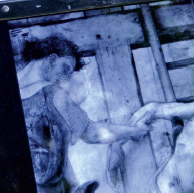
Doutoramento em Ciências Agrárias
Understanding the role of auxins and oxidative enzymes on adventitious root formation in olive (Olea europaea L.) cultivars
Sara Porfírio

Orientação: Marco Diogo Richter Gomes da Silva, Augusto António Vieira Peixe, Maria João Pires de Bastos Cabrita, Parastoo Azadi
Olive (Olea europaea L.), one of the main crops in the Mediterranean basin, is mainly propagated by cuttings, a classical propagation method that relies on the ability of the cuttings to form adventitious roots. While some cultivars are easily propagated by this technique, some of the most interesting olive cultivars are considered difficult-to-root which poses a challenge for their preservation and commercialization. Therefore, increasing the current knowledge on adventitious root formation is extremely important for species like olive. This research focuses on evaluating the role of free auxins and oxidative enzymes on adventitious root formation of two olive cultivars with different rooting ability - ‘Galega vulgar’ (difficult-to-root) and ‘Cobrançosa’ (easy-to-root). In this context, free auxin levels and enzyme activities were determined in in vitro -cultured ‘Galega vulgar’ microshoots and in semi-hardwood cuttings of cvs. ‘Galega vulgar’ and ‘Cobrançosa’.
To attain this goal, an analytical method for the quantification of free indole-3-acetic acid (IAA) and indole-3-butyric acid (IBA) was developed, which is based on dispersive liquid-liquid microextraction followed by microwave derivatization (DLLME-MAD) and gas chromatography-mass spectrometry (GC/MS) analysis. The developed method was validated in terms of linearity, recovery, limit of detection (LOD) and limit of quantification (LOQ) and proved to be useful in the analysis of two very different types of plant tissues. The results from auxin quantification in olive samples point at a relationship between free auxin levels and rooting ability of both microshoots and semihardwood cuttings. A defective IBA-IAA conversion, resulting in a peak of free IAA during initiation phase, seems to be associated with low rooting ability.
Likewis, differences in the activity of oxidative enzymes also appear to be related with rooting ability. Higher polyphenol oxidases (PPO) activity is likely related with an easyto- root behavior, while the opposite is true for peroxidases (POX) (including IAA oxidase (IAAox)) activity. A possible hypothesis for adventitious root formation in olive microcuttings is presented herein for the first time. Free auxins, oxidative enzymes, alternative oxidase (AOX) and reactive oxygen species (ROS) are some of the factors that may be involved in this highly complex physiological process. Interestingly, while temporal changes in auxin levels were similar between microshoots and semihardwood cuttings, the conclusions obtained from enzyme activity results in microshoots didn’t translate to semi-hardwood tissues, showing the emerging need for adaptation of classical agronomical research studies to modern techniques.




